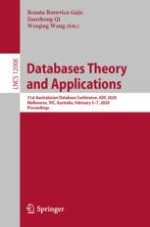2020 | Book
Databases Theory and Applications
31st Australasian Database Conference, ADC 2020, Melbourne, VIC, Australia, February 3–7, 2020, Proceedings
Editors: Renata Borovica-Gajic, Jianzhong Qi, Weiqing Wang
Publisher: Springer International Publishing
Book Series : Lecture Notes in Computer Science
